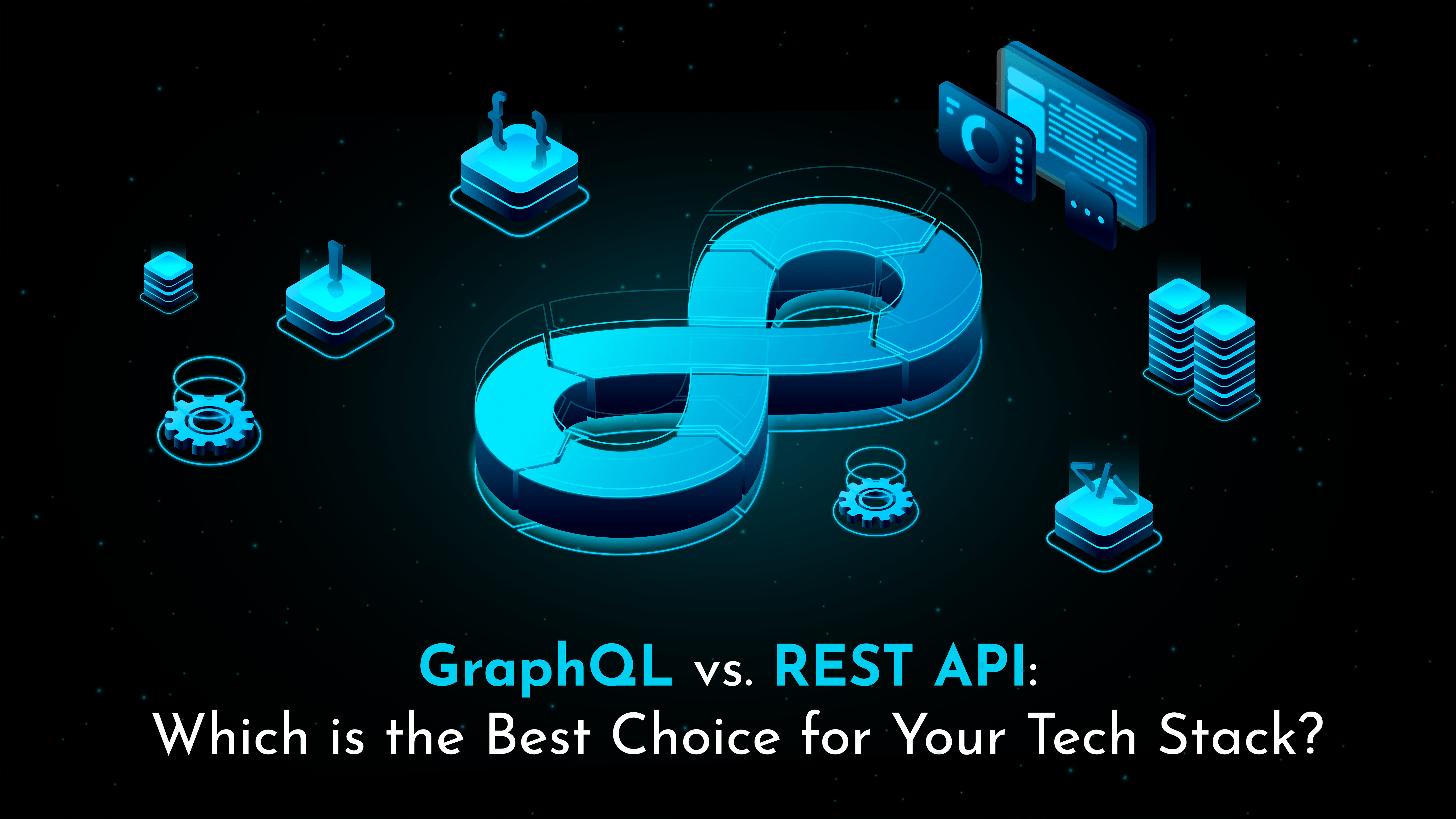
What is Supply Chain Management, and Why is it Important?
Have you ever wondered how a simple cotton plant transforms into the trendy T-shirt you just bought online?
Or how your favourite electronics brand manages to launch its latest gadgets globally, almost simultaneously, without a hitch?
The answer lies in the complex yet fascinating world of Supply Chain Management (SCM).
In today’s fast-paced business environment, the term “supply chain management” is often thrown around, but its full scope and critical importance are not always understood.
While it may sound like corporate jargon, the truth is that SCM is the unsung hero behind the operations of virtually every product-based business you can think of.
Supply chain management (SCM) is the backbone of many enterprises.
It coordinates and organizes the flow of goods from raw material acquisition, production, and eventual delivery to the consumer.
At its heart, it’s integral to ensuring customer satisfaction and business profitability.
With the emergence of blockchain technology, SCM is undergoing transformative changes leading to enhanced transparency, design thinking, and improved customer experience.
Join us on this journey as we explore the intricacies of SCM, from raw materials to the hands of satisfied customers, and discover how Autify Network is at the forefront of this transformation, revolutionizing the way we view and manage supply chains.
Understanding the Concept of Supply Chain Management
Supply Chain Management is like making sure all the parts needed to make things, like clothes, come together at the right time so that we can utilize them when in need.
It’s like a big puzzle to make everything work nicely.
It’s a sequence of processes involving a company’s operational umbrella—procurement, production, distribution, and customer service.
The importance of SCM can’t be overstated. Effective SCM results in lower operational costs, improved cash flow, and increased customer satisfaction.
On the other hand, a disorganised supply chain can lead to inventory problems, production bottlenecks, delayed deliveries, and, ultimately, unsatisfied customers.
Components of Supply Chain Management
-
- Suppliers
The first stop in a supply chain, suppliers provide the raw materials or components needed to create a product.
-
- Manufacturers
These are the entities that take raw materials from suppliers and convert them into finished products. Manufacturers are responsible for production, quality control, and inventory management.
-
- Distributors
Distributors work as middlemen between manufacturers and retailers. They purchase products from manufacturers and distribute them to various retail outlets.
-
- Retailers
The stores or online platforms where consumers can purchase the product. Retailers are the face of the supply chain that the customer interacts with.
-
- Customers
The end-users or consumers who purchase the product for use or consumption. Without the customer, the supply chain is incomplete.
Processes Involved
-
- Procurement
The initial step where businesses acquire raw materials or components from suppliers. This involves negotiating contracts, ordering, and payment.
-
- Production
The phase where raw materials are converted into finished goods. This is usually carried out in manufacturing plants and involves quality checks and inventory management.
-
- Distribution
After production, the finished goods are sent to a distribution center where they are stored until they need to be shipped to retailers.
-
- Sales
The finished products are sold to customers through various channels, whether it’s online platforms or brick-and-mortar stores.
-
- Customer Service
This involves after-sales services, including customer support, returns, and warranty claims, ensuring a good customer experience.
Example: How a Simple Product Like a Handkerchief Goes Through These Processes
Procurement: Cotton is bought from suppliers to create the fabric for the handkerchief.
-
- Production: The cotton is processed, dyed, and cut into handkerchiefs at a manufacturing plant.
- Distribution: Once a batch of handkerchiefs is ready, they are sent to a distribution center where they are sorted and stored.
- Sales: Retailers order handkerchiefs from the distribution center, and they are placed on shelves in stores or listed online for consumers to purchase.
- Customer Service: After purchasing, if a customer finds a defect or has a question, they contact customer service for support, which could result in a product return or exchange.
- Production: The cotton is processed, dyed, and cut into handkerchiefs at a manufacturing plant.
Imagine the journey a simple piece of fabric must go through before becoming the handkerchief you pick up at your local store.
It involves a series of well-coordinated steps carried out by multiple entities—all crucial components of an effective supply chain.
This example illustrates the intricate and interconnected nature of Supply Chain Management and why every step matters.
If you are wondering how the fashion industry merges with blockchain technology, check out our infographic post here.
The Transformation of Supply Chain by Blockchain
Blockchain has been a game-changing factor in the SCM. Protocols designed to decentralize information and increase transparency are reshaping various industry sectors.
One of the impactful changes is seen in the fashion industry where blockchain is being used to fight counterfeits and build more sustainable supply chains.
For instance, Adidas is one of the leading fashion brands that have embraced blockchain technology to mitigate the persistence of counterfeits in the supply chain.
As discussed in one of our articles, blockchain has enabled Adidas to verify the authenticity of products at each phase of the supply chain.
“Blockchain is creating an immutable path from the manufacturer to the final customer, eliminating any chance of infiltration by counterfeit products.
This transparency and authenticity have revolutionized customers’ experience and piqued trust.”
Details of a Simple Transaction: Conventional vs. Blockchain Systems | Source: Harvard Business Review
Design Thinking Approach in SCM
Design thinking is another tag that has been associated with the wave of changes in SCM.
Basically, it implies a solution-oriented approach that involves understanding the end-users, challenging assumptions, and redefining problems to identify alternative strategies and solutions that may not be instantly apparent.
One primary application of design thinking in SCM is in enhancing sustainability.
As outlined in our blog, design thinking is critical to materializing a sustainable supply chain for luxury fashion brands.
The Importance of Supply Chain Transparency
Transparency in the supply chain means that all parts of the process, from sourcing raw materials to delivering the final product to the consumer, are open to scrutiny.
This transparency is vital because it assures customers about their purchase’s ethicality, sustainability, and authenticity.
In the fashion industry, the call for supply chain transparency has been increasingly significant due to two primary reasons: counterfeits and sustainability.
Counterfeits hurt the brand reputation, and the lack of sustainability concerns many conscious customers.
Thankfully, blockchain is serving as an instrumental tool in promoting transparency across the supply chain.
Supply Chain Management and E-Commerce: The Future
The need for supply chain management is more evident in e-commerce than in any other sector.
The exponential growth of e-commerce businesses is backed by a strong and efficient supply chain that delivers goods on time with the least hassle possible.
There’s a dire need for businesses to adapt to new possibilities in order to remain competitive.
Our definitive guide to traceability 2023 provides a detailed understanding of the role of SCM in the future of e-commerce.
“With new technology at their disposal, businesses will enhance their delivery process, reduce delivery errors, ensure real-time package tracking, and promote a more personalized customer experience.”
Undeniably Essential
The data-driven design aspects of blockchain in SCM are undeniably essential for all industries.
Especially with budding Gen-Z trends like sustainable fashion, it is equally crucial that we understand the role of SCM in building a more sustainable world.
In the tenacious pursuit of this goal, find out more about building a sustainable supply chain for luxury fashion brands and why it matters.
Despite the various advantages blockchain offers, supply chain transparency is perhaps the most significant one.
Supply chains are elaborate ecosystems involving numerous entities and infinite events.
Ensuring that each activity occurs in a transparent, accountable, and ethical manner can be overwhelmingly complex.
Blockchain is an answer to this intricate challenge. Discover more about supply chain transparency in the fashion industry.
Blockchain technology brings foolproof traceability in the supply chain, establishing trust and bolstering brand integrity.
Envision a future where counterfeit products and unethical sourcing can be fully eliminated. It’s not just a pipe dream anymore.
The in-depth ramifications of traceability in SCM have been expanded upon in our definitive guide to traceability 2023 – the future of e-commerce.
Augmenting traditional SCM operations with blockchain technology isn’t just about enhancing the customer experience, or optimizing data-driven designs.
It is fundamentally about transforming the heart of business operations; its supply chain.
The Future of Supply Chain Management
In summary, supply chain management has been integral to business operations for decades.
However, recent technological developments, especially blockchain and design thinking, have partly revolutionized how companies manage their supply chains.
Enhanced transparency, improved customer experience, and sustainability just begin to scratch the surface of the potential changes on the horizon.
“Blockchain is ushering unprecedented levels of trust and transparency. By integrating blockchain into your supply chain, you’re not just adopting a trend; you’re embracing a transformative solution that offers real-time verification, enhanced security, and full traceability at every stage “
Nabarun Chakraborty, CEO and founder – Autify Network
Moving forward, companies should embrace these technological advancements and seek to continually optimize their supply chains to stay ahead of the competition while providing customers with reliable and ethical products.
Given how vast and complex supply chain management is, it comes with its challenges. Here are the Top 5 challenges faced by the supply chain industry.
Remember, it’s the customer who matters most in today’s business landscape.
Availing a satisfied customer experience in every interaction should be the heartbeat of every company’s mission. Consequently, supply chain management serves as the lifeblood of that mission.
In today’s fast-paced world, the efficiency of supply chain management can make or break a business. Emerging technologies like Blockchain, Internet of Things (IoT), and Radio-Frequency Identification (RFID) are game changers in optimizing supply chain operations.
But what happens when you compare traditional supply chain management with one enhanced by these technologies?
Let’s take a deep dive to see how these two approaches stack up against each other, shall we?
|
Aspect |
Supply Chain Management Without Blockchain, IoT, RFID |
Supply Chain Management With Blockchain, IoT, RFID |
|
Visibility & Transparency |
Limited real-time visibility into supply chain processes. |
Enhanced transparency with real-time tracking of products and assets across the supply chain. |
|
Traceability |
Limited ability to trace product origins or pinpoint the source of issues or recalls. |
Improved traceability, enabling quick identification and isolation of issues or recalls. |
|
Data Accuracy |
Manual data entry and potential for human errors. |
Automated data collection, reducing errors and ensuring data accuracy. |
|
Efficiency |
Manual processes can be time-consuming and prone to delays. |
Streamlined processes with automation, leading to increased efficiency and reduced lead times. |
|
Cost Reduction |
Higher operational costs due to inefficiencies. |
Potential cost savings through optimized processes and reduced waste. |
|
Risk Management |
Limited ability to identify and mitigate risks in real-time. |
Improved risk management through early detection and response to supply chain disruptions. |
|
Inventory Management |
Limited visibility into inventory levels and locations. |
Real-time inventory tracking and optimization, reducing stockouts and overstocking. |
|
Compliance & Regulations |
Manual compliance monitoring and reporting. |
Automated compliance monitoring, ensuring adherence to regulations and standards. |
|
Counterfeit Prevention |
Vulnerable to counterfeit products entering the supply chain. |
Enhanced security measures to prevent counterfeit products and protect brand reputation. |
|
Sustainability Reporting |
Limited ability to gather and report sustainability data. |
Improved sustainability reporting through accurate tracking of environmental metrics. |
|
Supplier Collaboration |
Limited data sharing and collaboration with suppliers. |
Enhanced supplier collaboration, trust-building, and automated reporting. |
|
Consumer Trust & Brand Image |
Limited means to assure consumers of product authenticity. |
Enhanced consumer trust through transparent supply chain practices and authenticity verification. |
|
Data Security & Privacy |
Data security relies on traditional cybersecurity measures. |
Enhanced data security with blockchain’s cryptographic protection and data privacy features. |
|
Increase in Revenue |
Limited ability to capture additional revenue through enhanced supply chain visibility and customer trust. |
Potential revenue increase through improved product availability, reduced lead times, and enhanced customer confidence. |
What Problem Autify Network is Solving?
Markets and supply chain distribution today are more expansive and global than ever before in history. The advent of eCommerce has allowed products to be sold and shipped to almost anywhere in the world.
Consumers today have the power to view and order any product online at any time of the day and from anywhere in the world.
Manufacturers work to keep up with the demand and are constantly looking for ways to reduce costs through substandard manufacturing and low-cost supply of materials and components.
These global opportunities, however have created and encouraged the growth of counterfeit goods and the theft of companies’ intellectual property.
Today’s global market sees consumers purchasing products both on retail and online platforms, many a time without sufficient information about the authenticity of the product.
Most consumers receive little to no information about how the product was made, where the product is from, or if it could be a possible replica when they make a purchase.
The burning issue is the limited transparency and the absence of a tamper-proof way to determine the authenticity of the product.
-
- Suppliers: Only 5% of purchasers claim they can pay suppliers on time consistently.
- Manufacturers: Only 35% of manufacturers utilize supply chain management software (due to lack of access).
- Distributors: The top 5% of distributor accounts typically represent 65-70% of sales.
- Retailers: Only 6% of businesses claim to have achieved full supply chain visibility.
- Consumers: Product transparency and authenticity is a continually growing concern with an estimated $4 Trillion counterfeit goods market size.
- Suppliers: Only 5% of purchasers claim they can pay suppliers on time consistently.
“Anything that can conceive of as a supply chain, blockchain can vastly improve its efficiency- it doesn’t matter if its people, numbers, data, money.”
Vitalik Buterin, Founder Ethereum
Why Autify Network?
We are developing a revolutionary trust protocol that leverages the power of blockchain and AI to increase transparency in the global supply chain.
We are one of the few developing modern, modular, and comprehensive supply chain management solutions catering to brands, vendors, suppliers, and end consumers.
This is one of our standout features, setting us apart from the competition. Our platform offers exceptional flexibility, allowing easy customization based on business needs and size, all at a reasonable cost.
Additionally, we are using the most latest technology, even in the field of blockchain technology, to improve the user experience:
-
- Diamond Standard (ERC-2535): Makes smart contracts more flexible and easier to update, without running out of storage space
-
- Account Abstraction (ERC-4337): Simplifies usage and interaction of blockchain apps.
Here is a detailed list of all the solutions provided by Autify Network:
-
- Supply chain management
Businesses will use our end-to-end supply chain management platform to manage the flow of goods and services from the point of origin to the point of consumption.
Our platform will provide real-time visibility into the movement of goods and enable businesses to quickly adapt to changes in demand or supply. They can also help reduce costs and improve efficiency by automating routine tasks and streamlining workflows.

Here is a list of features available in the supply chain management solution:
-
- Inventory management
-
- Order management
-
- Transportation management
-
- Warehouse management
-
- Supplier management
-
- Demand planning
-
- Analytics and Reporting
-
- Supply chain traceability
Our supply chain traceability platform can track the provenance of goods, including their origin, movement, and ownership.
This can help to prevent counterfeiting and ensure the authenticity and quality of products. Our Platform will make it possible for different actors along the supply chain to have different roles and privileges.
McKinsey & Company estimates that blockchain-enabled traceability initiatives could create an annual value of up to $120 billion for the global food industry.
All players can fetch real-time data of the product’s journey from field to end consumer. By simply scanning a QR or NFC code, customers can easily access all relevant details about the product.
We will keep a permanent and immutable record of transactions, which can help to prevent fraud, tampering, and errors in supply chain data.
Supply chain participants can reduce the time and cost associated with tracking and verifying the authenticity of goods, and improve the efficiency of supply chain operations.

In addition to the supply chain management and traceability platform, we are also building several other innovative products:
-
- Sustainability track and trace
Our sustainability track and trace solution will allow companies to track their supply chains’ environmental and social impact, including carbon emissions, water usage, and labor standards.
By providing transparent and verifiable sustainability data, we can help companies meet their sustainability goals and improve their reputation with consumers.
-
- Autify Verified Vendors Network
Our verified vendor marketplace will provide a trusted platform for companies to find and connect with verified suppliers and service providers.
By using blockchain-based identity verification and reputation scoring, we can ensure the reliability and quality of our vendors and simplify the procurement process for our clients.
-
- API Platform for eCommerce platforms
Our API platform will enable eCommerce platforms to integrate our blockchain-based traceability and sustainability solutions into their existing systems.
This will allow eCommerce companies to provide greater transparency and value to their customers while enhancing their sustainability and traceability efforts.
-
- Integrating AI and Computer Vision for Automation
We are leveraging the power of AI and computer vision to improve item tracking and identification within the supply chain.
This will enable us to provide more accurate and efficient traceability solutions, help our clients reduce losses, and improve inventory management.
-
- B2B Cross-Border Payment Module
Our cross-border payment platform will allow businesses to make secure and efficient payments across borders.
We can help businesses expand their global reach and streamline their international operations by eliminating intermediaries and reducing transaction costs.
We aim to eliminate the inefficiencies currently plaguing and are poised to transform commerce and supply chain operations for businesses worldwide.
Our product is tackling a highly complex issue that significantly impacts companies & individuals globally. The supply chain inefficiencies, counterfeiting, and lack of transparency in this industry have resulted in losses exceeding $5 trillion annually.
Conclusion
In the grand scheme of things, sound SCM equates to reliable deliveries, satisfied customers, and a thriving business.
With technological developments like blockchain refining the way supply chain processes are executed, businesses must adapt to stay competitive.
Are there unanswered questions you still have? Check out our FAQ page!
Do you want to learn more about what we do or perhaps share some fresh perspectives? Get in touch with us on our contact page.
At Autify Network, we keep pushing the frontiers of SCM and blockchain technology to bring businesses more transparency, reliability, and efficiency.
Keep yourself updated with our latest endeavours in the news.
As we march towards a streamlined and clear-cut blockchain-powered supply chain landscape, step in and be part of this transformative journey with us.







